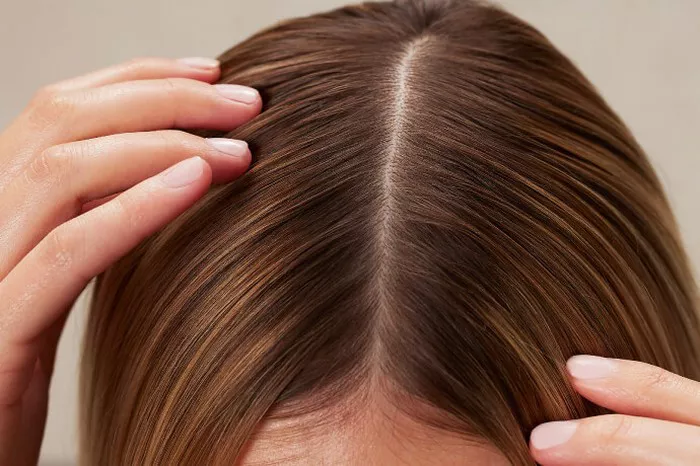Thinning hair is a common concern that affects millions of people worldwide. If you’ve noticed your hair becoming finer, weaker, or less dense, you’re not alone. Many factors—from genetics to lifestyle choices—can contribute to this issue. In this article, we’ll explore the reasons behind thinning hair in simple, easy-to-understand terms. By the end, you’ll have a clearer idea of what might be causing your hair to thin and what steps you can take to address it.
Genetics: The Role of Family History
Your genes play a big role in determining the thickness of your hair. If your parents or grandparents had thin hair, you might inherit the same trait. This is often called androgenetic alopecia, or pattern hair loss.
- How It Works: Genes can make hair follicles sensitive to hormones like dihydrotestosterone (DHT). Over time, DHT shrinks follicles, leading to shorter, thinner hair strands.
- Who It Affects: Men often see a receding hairline or bald spot. Women typically notice thinning around the crown or part line.
- What You Can Do: While you can’t change your genes, treatments like minoxidil (Rogaine) or finasteride (for men) may slow hair loss.
Hormonal Changes: The Invisible Culprit
Hormones regulate nearly every process in your body, including hair growth. Imbalances can lead to thinning.
- Thyroid Issues: An overactive or underactive thyroid disrupts the hair growth cycle. Hypothyroidism (low thyroid hormone) often causes dry, brittle hair.
- Pregnancy and Menopause: Estrogen levels drop after childbirth or during menopause, triggering sudden hair shedding (telogen effluvium).
- Polycystic Ovary Syndrome (PCOS): High androgens (male hormones) in women with PCOS can cause hair thinning on the scalp and excess hair growth elsewhere.
- Solution: Blood tests can detect hormonal imbalances. Treatments include thyroid medication, hormone replacement therapy, or anti-androgen drugs.
Nutritional Deficiencies: You Are What You Eat
Your hair needs vitamins, minerals, and protein to grow. A poor diet can starve your follicles.
- Iron Deficiency: Low iron (common in women with heavy periods) reduces hemoglobin, which carries oxygen to hair cells.
- Protein Deficiency: Hair is made of keratin, a protein. Without enough protein, hair growth slows, and strands become weak.
- Vitamin Deficiencies: Low levels of vitamin D, B12, or zinc are linked to hair loss.
- Fix It: Eat iron-rich foods (spinach, red meat), lean protein (eggs, fish), and consider supplements after consulting a doctor.
Aging: The Natural Thinning Process
As you age, hair naturally loses density.
- Why It Happens: Hair follicles shrink over time, producing finer strands. Growth phases also shorten, leading to less hair replacement.
- When It Starts: Most people notice thinning in their 40s or 50s, but it can begin earlier.
- Prevention: Maintain a healthy lifestyle and avoid harsh styling to preserve hair quality.
Stress and Lifestyle Factors
Physical or emotional stress pushes hair into a “resting” phase, causing shedding weeks later.
Types of Stress:
- Sudden Stress: Surgery, illness, or trauma.
- Chronic Stress: Long-term anxiety or poor sleep.
- Habits Matter: Smoking restricts blood flow to follicles. Crash diets deprive hair of nutrients.
- Recovery: Hair often regrows once stress is managed. Try meditation, exercise, or therapy.
Medical Conditions and Scalp Health
Certain illnesses or scalp issues directly impact hair thickness.
- Autoimmune Diseases: Alopecia areata causes patchy hair loss when the immune system attacks follicles.
- Scalp Infections: Fungal infections (like ringworm) create scaly patches and breakage.
- Chronic Illnesses: Diabetes, lupus, or anemia disrupt the hair cycle.
- Treatment: Address the underlying condition. Antifungal shampoos or steroid injections may help.
Over-Styling and Chemical Damage
Your beauty routine could be harming your hair.
- Heat Tools: Flat irons and blow-dryers weaken hair shafts, causing breakage.
- Tight Hairstyles: Ponytails or braids pull on follicles, leading to traction alopecia.
- Chemical Treatments: Bleaching, perming, or relaxing strips hair of its protective layer.
- Prevention: Use heat protectants, avoid tight styles, and space out chemical treatments.
Medications and Treatments
Some drugs have hair loss as a side effect.
Common Offenders:
- Blood thinners
- Acne medications (isotretinoin)
- Antidepressants
- Chemotherapy
What to Do: Never stop medication without consulting your doctor. Hair often regrows after treatment ends.
Environmental Factors
External elements can weaken hair over time.
- Pollution: Toxins in the air clog follicles and cause inflammation.
- Sun Exposure: UV rays dry out hair, making it brittle.
- Hard Water: Mineral buildup from hard water leaves hair dull and prone to breakage.
- Protection: Wear hats outdoors, use clarifying shampoos, or install a water softener.
Solutions and When to See a Professional
While some causes of thinning hair are temporary, others need medical attention.
At-Home Care:
- Gentle shampoos
- Scalp massages to boost circulation
- Biotin or collagen supplements
Medical Treatments:
- Prescription medications (minoxidil, finasteride)
- Platelet-rich plasma (PRP) therapy
- Hair transplants
When to Worry: See a dermatologist if hair loss is sudden, patchy, or accompanied by itching/pain.
Conclusion
Thinning hair can feel distressing, but understanding the cause is the first step toward fixing it. Whether it’s adjusting your diet, managing stress, or seeking medical help, solutions exist. Be patient—hair grows slowly, and results may take months. In the meantime, treat your hair with kindness, and remember: thin hair doesn’t define your beauty.
Related topics:
How Long Does a Hair Transplant Last? Everything You Need to Know
Soft Swoop Bangs: The Spring 2025 Solution for Thinning Temples
Conte Hair Transplantation: Everything You Need to Know


